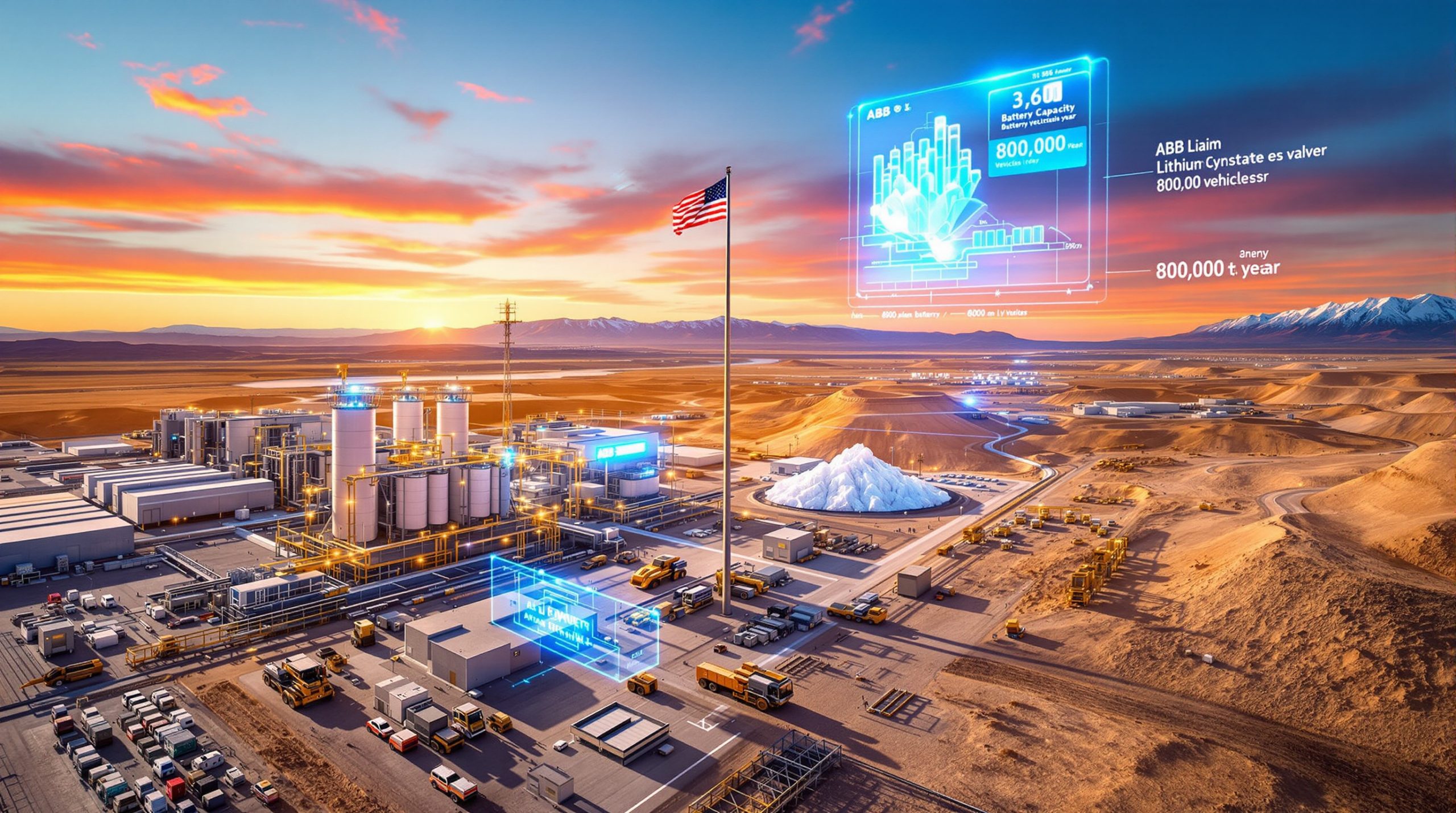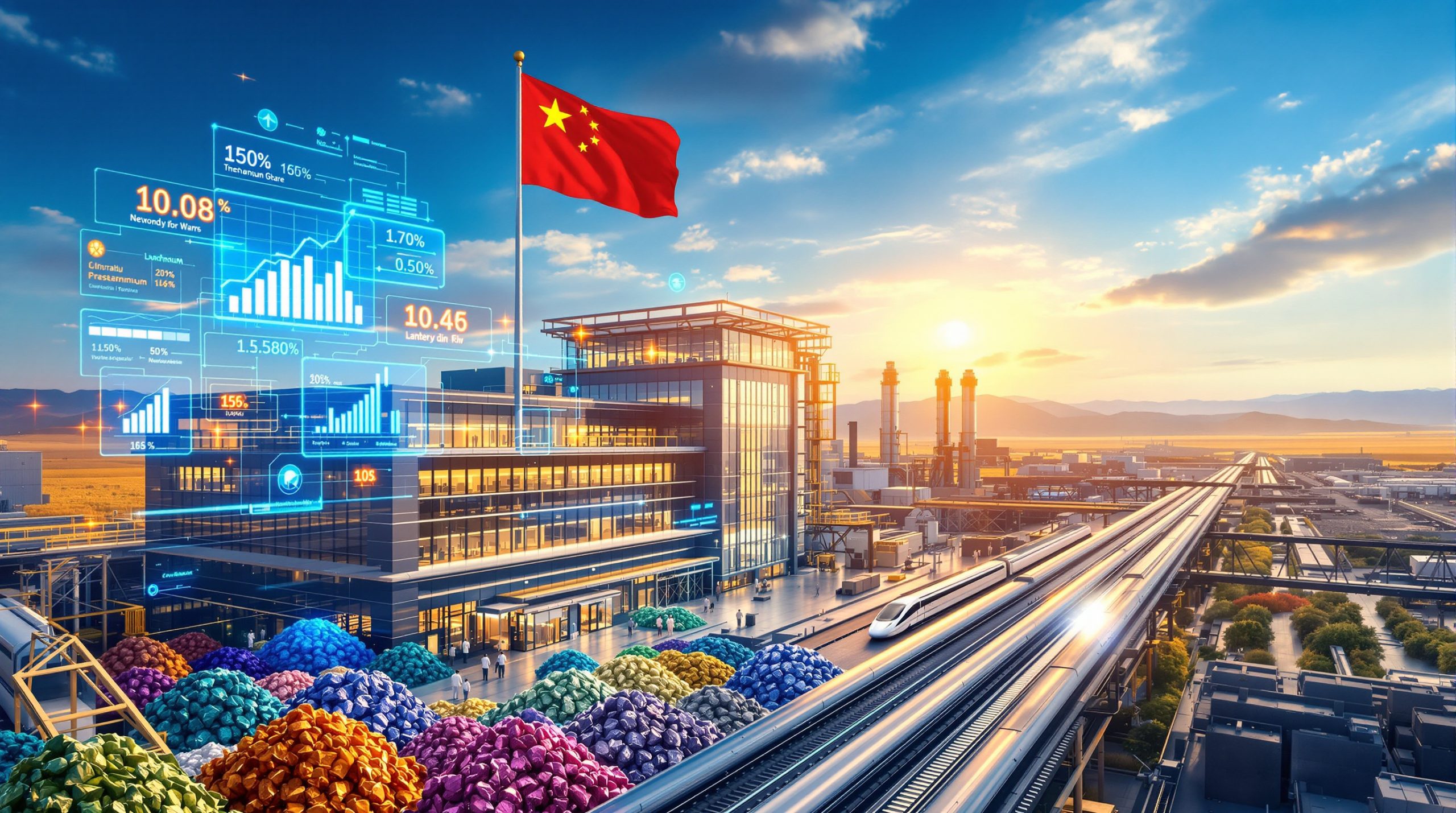What Are the New Rare Earth Metal Talks Between Russia and the US?
Russia and the United States have initiated groundbreaking discussions on joint rare earth metals projects within Russian territory, as announced by Kirill Dmitriev, Russia's special envoy on international economic and investment cooperation. These talks represent a significant development in international critical minerals cooperation amid growing global competition for these essential resources.
"Rare earth metals are an important area for cooperation, and we have begun discussions on various rare earth metals and other projects in Russia," stated Dmitriev, who also serves as CEO of the Russian Direct Investment Fund (RDIF).
The discussions, which officially began in early 2025, follow President Vladimir Putin's offer to the United States for joint exploration of Russia's vast and largely untapped rare earth deposits. While specific companies remain unnamed, Dmitriev confirmed that several have already expressed interest in these collaborative ventures.
Key Details of the Initial Discussions
The talks are being led by Russia's negotiation team headed by Kirill Dmitriev, whose dual role as RDIF CEO and special envoy grants him significant authority in structuring potential investment frameworks. The initiative represents one of the most substantial mineral cooperation proposals between the nations in recent decades.
Initial Russia-US discussions took place in Saudi Arabia in February 2025, with follow-up negotiations anticipated for mid-April 2025, also in Saudi Arabia. This neutral venue has been strategically selected to facilitate dialogue amid the critical minerals race amid mounting geopolitical tensions.
Industry analysts note that Russia's rare earth deposits, particularly those in the Kola Peninsula, contain some of the highest-grade dysprosium and terbium concentrations outside of China – elements crucial for permanent magnets used in wind turbines and electric vehicles.
Why Are These Rare Earth Negotiations Happening Now?
The timing of these discussions is not coincidental but rather driven by several converging global factors that have created both urgency and opportunity for the two nations.
Geopolitical Context Driving Cooperation
The talks follow parallel negotiations between the US and Ukraine over a separate minerals development deal, establishing a pattern of American resource diplomacy in the region. President Vladimir Putin has specifically offered joint rare earth exploration projects to the US as part of a broader strategic economic dialogue.
The selection of Saudi Arabia as the meeting location highlights the increasingly complex multilateral nature of critical minerals diplomacy, with Middle Eastern nations serving as intermediaries between traditional geopolitical rivals.
"These discussions represent a pragmatic approach to resource security that transcends conventional political boundaries," noted Dmitriev during the February 2025 meeting, signaling Russia's openness to compartmentalizing mineral cooperation from broader diplomatic tensions.
US Strategic Motivations
President Trump has intensified efforts to counter China's dominance in critical minerals, which currently controls approximately 85% of global rare earth reserves: key players and strategies. This near-monopoly presents a significant vulnerability for US technological and defense industries.
Rare earths, while not actually rare in the Earth's crust, are exceptionally difficult and environmentally challenging to extract and process – making established supply chains particularly valuable. The seventeen elements are essential components for everything from smartphone screens to F-35 fighter jet guidance systems.
The US has identified supply chain diversification as a national security priority, with Department of Defense estimates suggesting that a prolonged rare earth supply disruption could disable up to 60% of advanced weapons systems production within six months.
How Does This Fit Into Global Rare Earth Metal Dynamics?
The Russia and US start talks on rare earth metals projects are occurring against a backdrop of unprecedented disruption and realignment in global rare earth markets.
Current Market Disruptions
Myanmar rebels (Kachin Independence Army) have disrupted approximately half of the world's heavy rare earth production through territorial conflicts in mining regions. This disruption has particularly affected dysprosium and terbium, minerals critical for high-performance magnets used in wind turbines and electric vehicle motors.
The price of neodymium, another critical rare earth element, has fluctuated by over 40% in the past year due to these supply uncertainties, creating significant challenges for manufacturers attempting to plan production costs.
China's traditional dominance in the sector is facing new challenges not only from supply disruptions but also from coordinated efforts by democratic industrialized nations to reduce dependency. However, China hasn't remained passive, with overseas mining investments reaching a record $21.4 billion in 2024 under the Belt and Road Initiative.
Broader Critical Minerals Landscape
European metals strategy faces substantial challenges from Chinese overcapacity and high energy prices. The EU's Critical Raw Materials Act, while ambitious in scope, lacks the bilateral cooperation mechanisms now being explored between Russia and the US.
Automotive manufacturers, particularly those committed to aggressive EV production targets, have expressed growing concern about battery metal supplies and costs. Industry estimates suggest global demand for rare earths could increase by 300-500% by 2035, primarily driven by green technology deployment.
The technical complexity of rare earth separation and processing represents another significant barrier to supply diversification. Only a handful of facilities worldwide can perform the complex metallurgical processes required to isolate individual rare earth elements to the 99.9% purity levels required for high-tech applications.
What Could This Partnership Mean for Global Rare Earth Markets?
A successful Russia-US rare earth partnership could fundamentally reshape global supply dynamics for these critical minerals.
Potential Economic Impacts
Diversification of rare earth supply chains beyond China would reduce price volatility and supply uncertainty for manufacturers globally. Metallurgical experts estimate that bringing Russian production capacity fully online could potentially reduce China's market share from 85% to approximately 65% within five years.
New investment opportunities in Russian mining sectors could attract capital not only from the US but from other allied nations seeking supply security. The Lovozero and Tomtor deposits in Russia are estimated to contain rare earth oxides worth over $50 billion at current market prices.
Price stabilization would benefit downstream manufacturers, particularly in aerospace, renewable energy, and electric mobility sectors. Industry analysis suggests that even a 15% reduction in rare earth price volatility could save manufacturing sectors billions in hedging costs and inventory management.
The creation of alternative supply routes for critical minerals would enhance global market resilience against regional disruptions like those seen in Myanmar. Geological data indicates Russia's deposits contain a more favorable balance of heavy rare earths than many alternative sources being developed in Australia and Canada.
Technical Collaboration Opportunities
Joint exploration of Russia's underdeveloped rare earth deposits could leverage American advanced extraction technologies with Russia's mineral resources. The Tomtor deposit in Siberia contains rare earth concentrations up to 12% – significantly higher than the 0.05-0.5% typical in most global deposits.
Technology sharing for extraction and processing could accelerate development timelines. American innovations in environmentally responsible extraction methods could be particularly valuable for developing Russia's Arctic deposits, where ecological concerns have previously limited development.
Development of more efficient rare earth separation techniques represents a crucial area for cooperation. Current processing methods require extensive use of acids and solvents, creating environmental challenges that collaborative research could potentially address.
Establishment of new processing facilities would reduce global dependency on China's separation capacity. Metallurgists estimate that a world-class separation facility requires approximately $500-800 million in investment but could process thousands of tons of rare earth oxides annually once operational.
FAQ About Russia-US Rare Earth Collaboration
What are rare earth metals and why are they important?
Rare earth metals comprise 17 elements (including neodymium, dysprosium, yttrium, and europium) essential for manufacturing high-tech products including electric vehicles, wind turbines, smartphones, and military equipment. Despite their name, most are relatively abundant but difficult and environmentally challenging to extract and process.
The heaviest rare earths (dysprosium, terbium) are particularly crucial for manufacturing permanent magnets that maintain their magnetic properties at high temperatures – essential for electric vehicle motors and wind turbine generators.
How might this affect China's position in the rare earth market?
This collaboration could potentially reduce China's market dominance, which currently controls approximately 85% of global rare earth processing. A Russia-US partnership represents a significant attempt to create alternative supply chains.
China's response will likely include accelerated investment in African rare earth resources and possible price reductions to maintain market share. Historical precedent from 2010-2012, when China briefly restricted exports, suggests they recognize the strategic liability of weaponizing rare earth supplies.
What specific rare earth deposits in Russia might be developed?
Russia possesses significant potential resources across several regions. The Lovozero deposit on the Kola Peninsula contains substantial neodymium and scandium resources. The Tomtor deposit in Siberia features exceptionally high concentrations of niobium and rare earth elements, with ore grades reaching 12% – among the richest globally.
Eastern Siberia and Russia's Far East regions contain numerous smaller deposits that, while individually modest, collectively represent substantial resources. The Chukotka region holds promising heavy rare earth deposits that remain largely unexplored using modern geological techniques.
How does this relate to other US critical mineral initiatives?
This initiative complements other US efforts including domestic mining revival at operations like the Mountain Pass Mine in California, which resumed production in 2018 after years of dormancy. The US has also established partnerships with allies like Australia's $400M boost to Iluka's rare earth refinery and Canada through the Minerals Security Partnership launched in 2022.
Recent discussions with Ukraine on mineral development, particularly focusing on lithium and titanium resources, demonstrate a pattern of resource diplomacy aimed at securing diverse supply chains for critical minerals essential to both defense and green technology applications. Furthermore, there are promising developments like the Toliara Project: a groundbreaking critical minerals development that could further diversify global supply chains.
With these developments accelerating, industry experts are closely watching how they will impact mining and finance industry predictions for 2025 and beyond, as the geopolitics of critical minerals continues to evolve.
Russia-US Rare Earth Metals Collaboration: Strategic Talks Begin
Worried About Missing the Next Big Mineral Discovery?
Don't be caught off guard when the next major ASX mineral discovery sends a stock soaring—Discovery Alert's proprietary Discovery IQ model delivers instant notifications on significant discoveries, turning complex mineral data into actionable insights for investors at all experience levels. Visit the Discovery Alert discoveries page to understand why historic discoveries have generated substantial returns and begin your 30-day free trial today.




